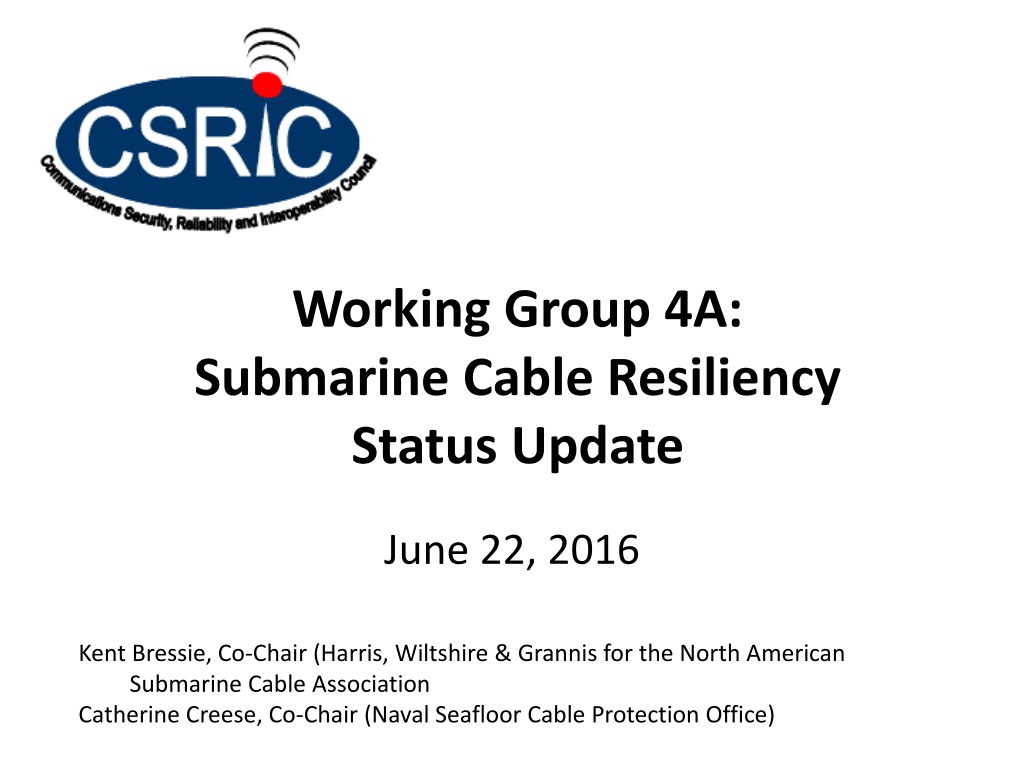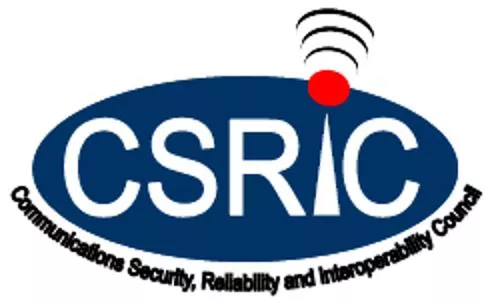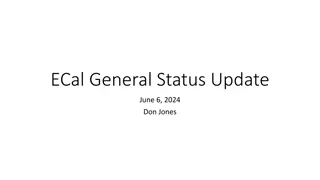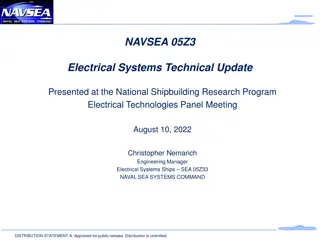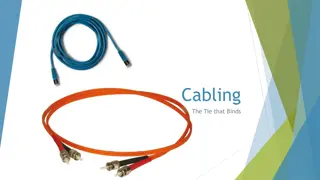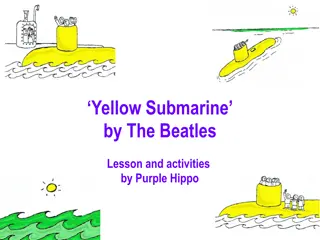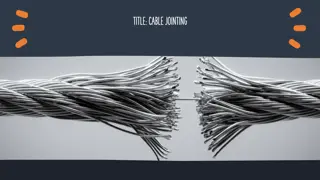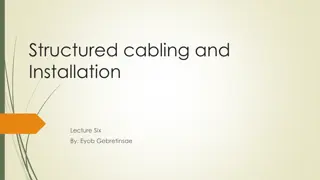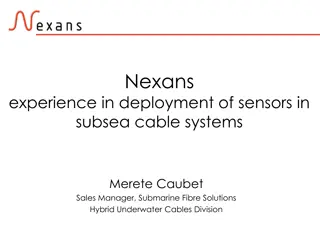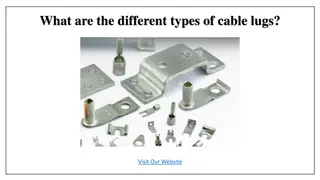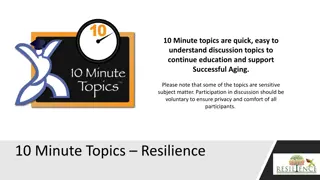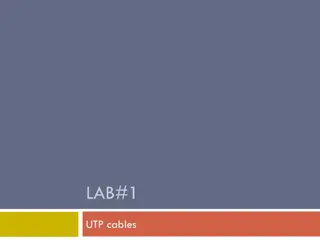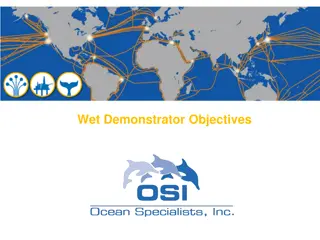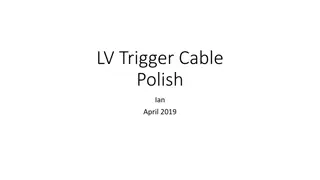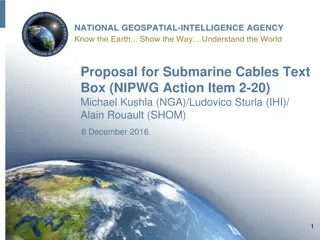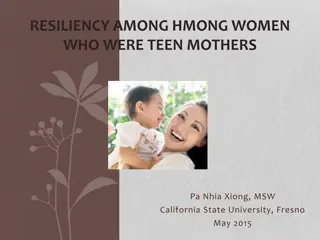Submarine Cable Resiliency Update and Recommendations
Working Group 4A provides updates on the status of submarine cable resiliency, highlighting the risks to infrastructure due to lack of coordination across agencies and clustering of cable routes. The group aims to enhance regulatory coordination and promote geographic diversity to ensure network resilience. Key deliverables include reports on regulatory coordination and geographic diversity. The group has identified challenges in intergovernmental coordination and proposes measures like establishing a federal point of contact, improving agency coordination, and streamlining permitting requirements.
Download Presentation

Please find below an Image/Link to download the presentation.
The content on the website is provided AS IS for your information and personal use only. It may not be sold, licensed, or shared on other websites without obtaining consent from the author. Download presentation by click this link. If you encounter any issues during the download, it is possible that the publisher has removed the file from their server.
E N D
Presentation Transcript
Working Group 4A: Submarine Cable Resiliency Status Update June 22, 2016 Kent Bressie, Co-Chair (Harris, Wiltshire & Grannis for the North American Submarine Cable Association Catherine Creese, Co-Chair (Naval Seafloor Cable Protection Office)
WG4A Objectives WG4A builds on the work of CSRIC IV s WG8, which analyzed the physical risks to submarine cable infrastructure and recommended spatial separation distances. WG4A is examining how lack of coordination across federal, state, and local agencies and clustering of cable routes and landings can increase the risk of cable damage and harm U.S. network resilience. Cable protection remains critical, as submarine cables carry approximately 99 percent of U.S. traffic with the rest of the world, not to mention Alaska, Hawaii, and U.S. territories. 2
WG4A Deliverables Regulatory Coordination Report: to examine gaps, conflicts, and sources of delay in existing federal, state, and local interagency coordination for submarine cable and other marine activity and infrastructure permitting and recommend mechanism for enhancing coordination without increasing regulatory burdens. Geographic Diversity Report: to address industry best practices and government policies for promoting geographic diversity of submarine cable routes and landings. 3
WG4A Members Steve Balk (Sprint) Paul Betts (Level 3) Stephen Bowler (FERC) Denise Coca (FCC) Allan Creamer (FERC) Seth Davis (SRD Associates) Jennifer Golladay (BOEM) Kurt Johnson (Pacific Crossing) Myrna Lopez-Ortiz (U.S. Army Corps of Engineers) Jennifer Miller (BOEM) Mikal Modisette (Verizon) Wayne Pacine (Board of Governors, Federal Reserve System) Patrick Quentmeyer (Treasury Dep t) Ron Rapp (TE SubCom) Neil Rondorf (International Cable Protection Committee) Nikki Shone (Southern Cross Cables) Rick Spencer (CenturyLink) Takahiro Sumimoto (Pacific Crossing) Minhtam Truong (DHS) Bob Wargo (AT&T) Al Wissman (NOAA) 4
WG4A Status WG4A has completed its report on Intergovernmental and Interjurisdictional Coordination. Interagency coordination mechanisms are lacking, and problems are significant Existing statutes do not require consideration of cables, so agencies are relying on NEPA to protect cables There is recent progress in agency practices and multi-agency planning efforts Additional policies, best practices and protection measures can mitigate the problems including Establishment of a single federal point of contact and clearing house for submarine cables Timely exchange of information by and greater coordination between the agencies that authorize both cable projects and other offshore projects Proactive involvement by the FCC in marine spatial planning Development of guidance for regulatory reviews for new submarine cable construction Streamlining permitting requirements Evaluating the role of NEPA and other relevant statutes 5
WG4A Schedule Regular conference calls with members June 2016: submission of final Regulatory Coordination Report Sept 2016: submission of draft Geographic Diversity Report 6
Next Steps Begin drafting the Geographic Diversity Report Resume bi-weekly conference calls Provide periodic status updates to Steering Committee and Council 7
